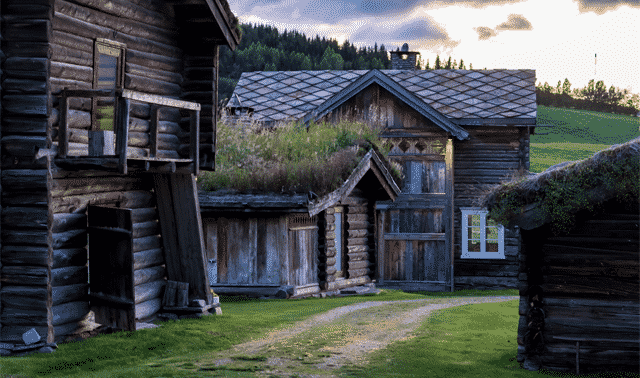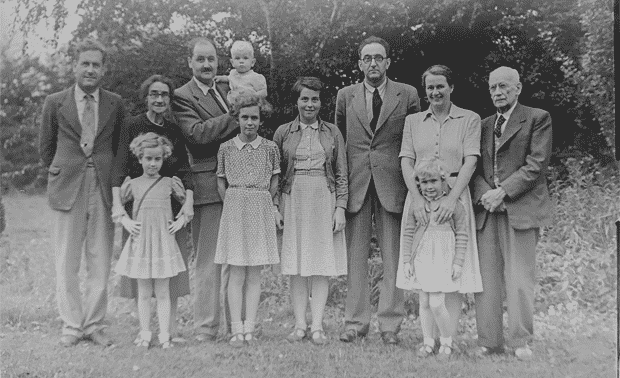
To help you get inspired to find your Scandinavian ancestors, we’re sharing a Scandinavian Genealogy Cheat Sheet!
Peak Scandinavian Immigration to the United States
- Denmark: 1870-1905
- Norway: 1836-1920
- Sweden: 1850-1920
Patronymic Surname Suffixes

Each Scandinavian country’s residents used different suffixes to form their patronymic surnames. Norway followed the pattern of the ruling country. After gaining independence from Sweden in 1905, Norwegians usually used the Norwegian suffixes –søn and –dotter.
This chart of patronymic surname suffixes holds true through most of the 18th and 19th centuries. Then as countries began requiring fixed surnames, families slowly began adopting them. Late in the 19th century, many families, especially in Denmark, began using the male extension for both sons and daughters.
Sometimes a record will show a female’s surname ending with –dtr. That’s just an abbreviation for the full extension, not the actual surname.
Online Resources
Denmark
- Danish Christian Names
- The Danish Immigrant Museum
- Den Danske Pioneer (The Danish Pioneer): A newspaper published since 1872 in Omaha, Neb., then Elmwood Park, Ill.
- National Danish-American Genealogical Society
- wStatens Arkiver: Dansk Data Arkiv (Danish Demographic Database)
- Trykt Gotisk Alfabet (Printed Gothic Alphabet)
Norway
- Norway-Heritage
- Norwegian-American Genealogical Center & Naeseth Library
- Norwegian American Weekly: A bilingual newspaper created by the merger of late-1800s papers.
- Norwegian Historical Data Centre
- Norwegian Moveable Feast Days Calendar
- Norwegian Naming Patterns
- Those Norwegian Names
- Norwegian National Archives
Sweden
See more: Can’t-Miss Swedish Genealogy Websites
- American Swedish Historical Museum
- ArkivDigital
- Nordstjernan: A newspaper first published in 1872 in New York City with news from Sweden, and from Swedish communities abroad.
- Swedish Feast Day Calendar
- Swedish State Archives
- SweGGate
- Swenson Swedish Immigration Research Center
Scandinavian Parish Records Language Terms
| Event(s) | Sweden | Denmark | Norway |
| birth | födde | født | fødte |
| christening | dop | døbt | døpte |
| confirmation | konfirmation | konfirmation | konfirmasjon |
| vaccination (for smallpox) | vaccination (from 1816) | vaccination (from 1810) | vaksinasjon (from 1810) |
| marriage | vigda or förbindelse | copulerede, viede or ægteskab | copulerede or viede or vigde |
| banns | lysning or trolovning | lysning or forlovelse | lysingen or forlovelse |
| betrothal/engagement | trolovning | forlovelse | forlovelse |
| death | död | døde | død |
| burial | begravning | begravelse | begravede |
| incoming list | inflyttningsbok | tilganglister | tilganglister or innflyttede |
| outgoing list | utflyttningsbok | afgangslister | afgangslister or uttflyttdede |
| index (when available) | fösamlingsböken | register | Hovedsiden |
| clerical survey (or household examination roll) | husförhörslängd | not used | not used |
We’ve given you each Scandinavian language’s terms for the sections in church record books. Most Scandinavian countries’ parishes keep records for the events listed in this chart, though not all church books include records for marriages, banns and betrothals.
Note that ministers may have recorded when an event happened by the religious feast day, based on the liturgical calendar rather than the fixed Julian or Gregorian calendar. See the resources box for calendars that will help you translate the feast day into a date.
Scandinavian Alphabets
| Language | Lower Case | Upper Case | PC Keyboatd Shortcut | Mac Keyboard Shortcut |
| Danish and Norwegian | æ | Æ | Ctl + & then A Ctl + & then Shift + A | Opt + ’ Opt + Shift + ’ |
| Danish and Norwegian | ø | Ø | Ctl + / then O | Opt + / then Shift + O Opt + Shift + O |
| Danish, Norwegian and Swedish | å | Å | Ctl + @ then A Ctl + @ then Shift + A | Opt + A Opt + Shift + A |
| Swedish | ä | ä | Ctl + : then A Ctl + : then Shift + A | Opt + U then Shift + A Opt + U then A |
| Swedish | ö | Ö | Ctl + : then O Ctl + : then Shift + O | Opt + U then Shift + O Opt + U then O |
Scandinavian languages use the Latin alphabet with additional letters that follow Z. Danish and Norwegian use the same additional letters, alphabetized æ, ø, å. Swedish uses the å plus two other letters, alphabetized å, ä, ö.
Before about 1814, the letter Å/å may be written as AA/aa, and alphabetized either before A or after all the other letters. Check both places in alphabetized lists.
This chart shows PC and Mac keyboard shortcuts for typing these letters. Some shortcuts are two-step: For Å on a PC, you’d first press the Control key and the @ key simultaneously, then Shift and A simultaneously. If these shortcuts don’t work on your computer, look for the Character Map or Insert Symbol menu item and then choose the character you need.
Patronymics Timeline
1526 | Danish law requires fixed surnames for nobility
1771 | Law requires fixed surnames in Duchy of Schleswig (part of Denmark)
1828 | Law requiring fixed surnames for all of Denmark is largely ignored, especially in rural areas
1856 | Danish law “freezes” family names
1900 | Most Danes use fixed surnames
1901 | Swedish Name Adoption Act requires children to take a fixed surname
1904 | Danish law again requires fixed family names, establishing practices for selecting surnames
1923 | Norway requires all families to have a single, heritable surname
1966 | Sweden abolishes the patronymic system
2006 | Denmark reintroduces patronymics as an optional method of selecting a child’s surname
A version of this article appeared in the September 2013 issue of Family Tree Magazine. Last updated, September 2018.





